Amino-functionalized Ti3C2MXene quantum dots as a photoluminescence sensor for diagnosing histidine in human serum

1. Article overview
MXene quantum dots (MQDs), as a new kind of zero-dimensional nanomaterials, have aroused the interest of researchers due to their unique physical and chemical properties. Here, a direct hydrothermal strategy was used to successfully produce amino-functionalized ti3c2mqd. The functionalized ti3c2mqd exhibits bright blue fluorescence (FL) due to its size effect and surface defects. In addition, Ni2+ can bind to the amino groups on the surface of ti3c2mqd. The absorption of the excitation light by the light-absorbing material makes the nickel ions effectively quench the photoluminescence of ti3c2mqd, which can be explained by the internal filter effect (IFE). At the same time, histidine (His) has a strong affinity for Ni2+, which is absorbed by His, forming a stable complex, dissociating Ni2+ from the Ti3C2MQD surface and restoring FL. Therefore, a fluorescence sensor for detecting His content in serum was established. In short, this work provides a method for His detection and shows that ti3c2mqd has great application potential in biomedicine and biosensing.
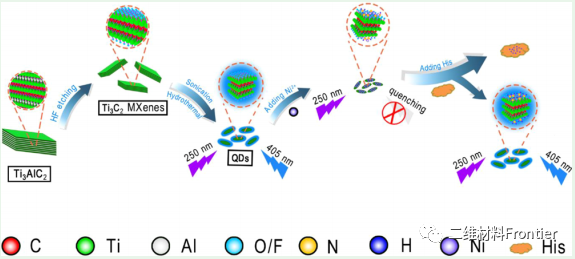
2. Graphic guide
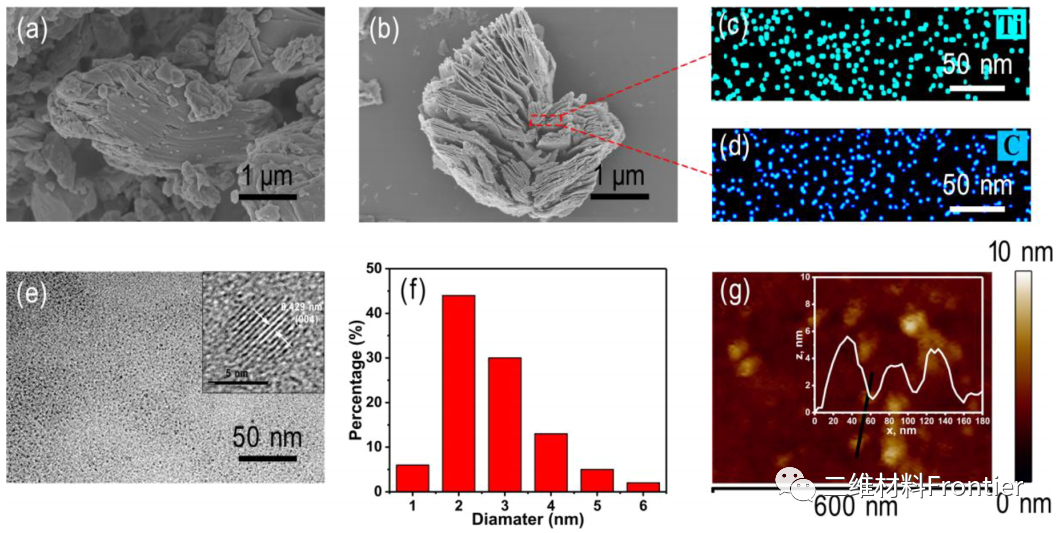
Figure 1. (a, b) Scanning electron microscope images of the original bulk material Ti3AlC2 and the obtained layered Ti3C2MXene. (c, d) SEM-EDS elemental mapping image of original Ti3C2MXene nanosheets. (e, f) TEM and diameter size distribution images of Ti3C2MQDs (insert image: HRTEM image of Ti3C2MQDs). (g) High-resolution AFM images of MQDs (inserted image: height profile along the line).
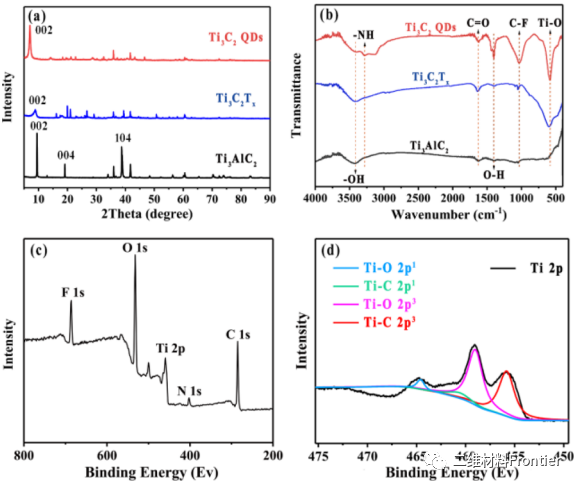
Figure 2. (a) XRD spectra of a large number of Ti3AlC2 and unsynthesized layered Ti3C2MXene and Ti3C2MQDs. (B) FT-infrared spectra of Ti3AlC2, Ti3C2MXene and Ti3C2mqd. (c) XPS full scan spectrum of ti3c2MQDs. (d) Ti3c2mqsTi2p high-resolution XPS spectrum.

Figure 3. (a) FL emission spectrum of ti3c2mqd in aqueous solution (excitation wavelength gradually extends from 210 to 350 nm). (b) Ultraviolet-relative spectrum (black line), FL emission spectrum (red line, λEm=410nm) and FL spectrum (blue line, λEx=250nm). (The illustration shows the MQD solution under visible light and 365nm UV lamp.)
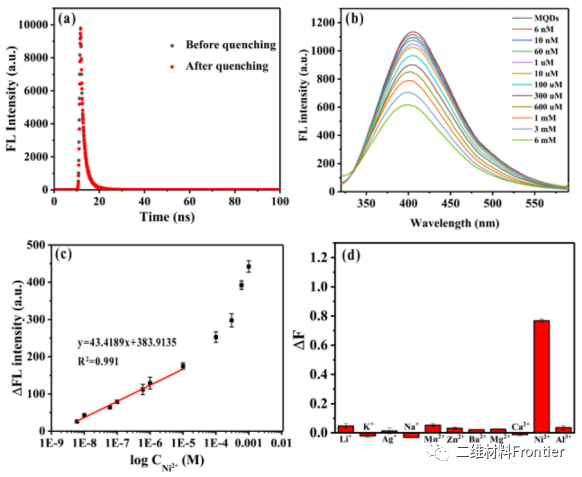
Figure 4. (a) MQDFL lifespan in the absence (black line) and presence of Ni2+ (red line). (b) Fluorescence response of MQDs after adding different ni2+ concentrations. (C) ΔFL calibration curve of MQD solution and Ni2+ concentration. In the presence of various metal ions, (d)ΔF at 410nm.
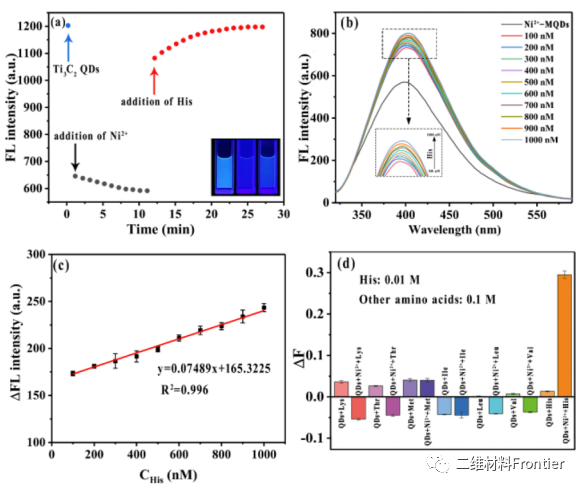
Figure 5. (a) (a) Intensity of MQDs in 410nm aqueous solution after adding Ni2+ and His (the inset from left to right shows MQDs, Ni2+−MQDs and His@Ni2+−MQDs solutions under 365nm ultraviolet light). After adding different His concentrations, the (b)FL response of Ni2+−MQDs (the dashed box is a magnified view). (C) ΔFL calibration curve of MQD solution and His concentration. In the presence of various essential amino acids, (d) ΔF at 410 nm (d) ΔF.
3. Full text summary
In summary, the mqd with amino functional group was successfully prepared by the one-step hydrothermal method. The resulting functional MQDs have narrow lateral size distribution, high quantum yield, bright blue FL and excellent light stability. MQDs exhibit high selectivity to Ni2+ and inhibit the pass-through interference. In addition, according to the mechanism of FL by the affinity between Ni2+ and Ni2+, Ni2+ is separated from the surface to form a stable compound. A new type of fluorescent nano-detection sensor for His was constructed, with a linear range of 0.1-1μM and a detection limit of 2.1nM. In addition, we discussed the related experimental process and experimental mechanism, and found that Ni2+ can quench the FL of MQDs through static quenching; at the same time, we verified the high affinity between Ni2+ and His. In addition, the standard addition method was used to detect the recovery rate of human serum samples from His detection, which proved the reliability and great potential of the detection system in disease diagnosis and biological analysis. Therefore, this research not only develops a sensitive His activity sensing detection method, but also provides a promising strategy for the application of emerging MXene materials in biosensing.
Article link:
https://doi.org/10.1021/acsanm.1c01425
This information is sourced from the Internet for academic exchanges only. If there is any infringement, please contact us to delete it immediately.
18915694570
Previous: Metal ion insertion en


